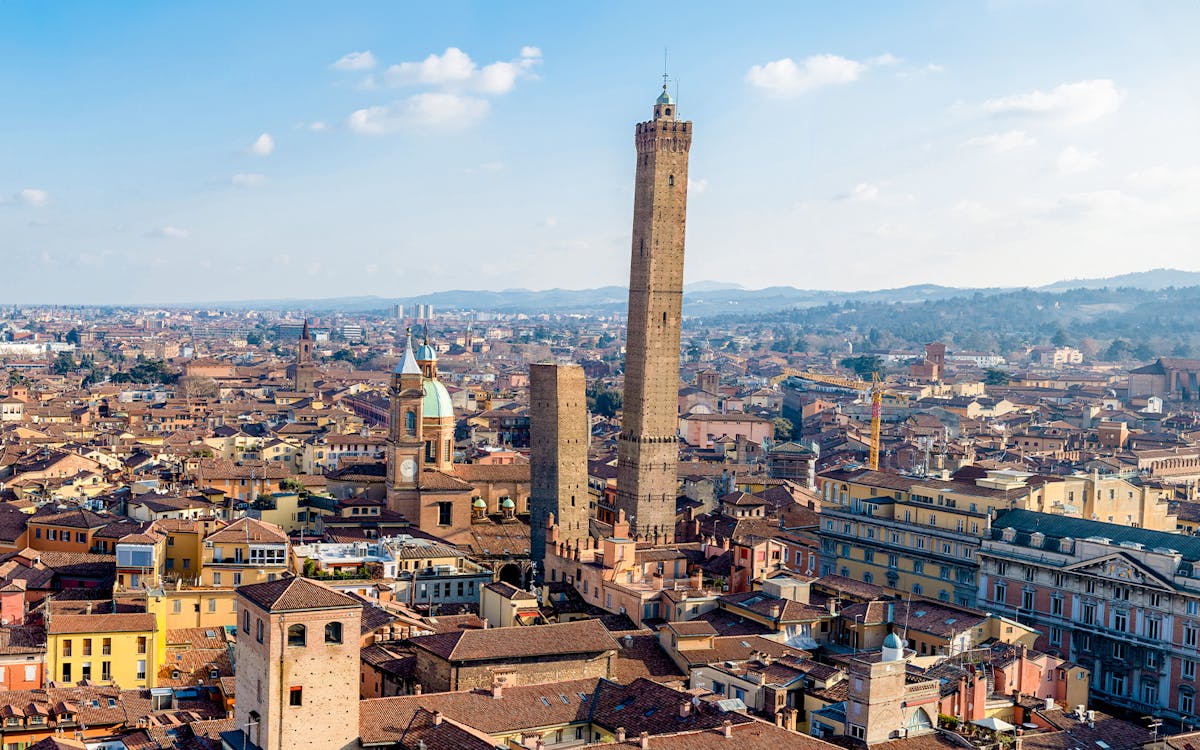If you read the reports about the "Leaning Tower collapse", or are planning a quick trip to Italy before the Leaning Tower of Pisa collapses, take a deep breath in. Truth is, that the Leaning Tower of Pisa is not the one in trouble. The less popular, but equally alluring, Leaning Tower of Bologna is the one whose days look like they’re numbered. Set in the heart of Bologna, a city brimming with historical allure and culinary wonders, stands the Garisenda Tower, overshadowed by its more famous cousin in Pisa.

👉 Is the Garisenda Tower collapsing?
Today, Garisenda faces its most significant challenge yet. With its stability increasingly compromised, the city council has added a protective barrier around it to safeguard the surroundings, and to keep people away from it, should the historical structure really collapse. According to experts in this CNN report, when exactly the tower may fall is anybody's guess. It could be a few days, months, or really even a decade. We’re hoping that the measures being taken are not just precautionary, but will really help to solidify the tower, and preserve this iconic structure. The city has embarked on an ambitious crowdfunding initiative, appealing to both locals and global history enthusiasts with the hope of preservation and of keeping a piece of Bologna's history alive.
✨ A Tale of Two Towers: Garisenda and Pisa

While the Leaning Tower of Pisa is globally renowned, Garisenda Tower deserves its fair share in the spotlight. Both towers, with their distinctive leans, often lead to a delightful mix-up. But, unlike Pisa's bell tower, Garisenda's lean actually has a more pronounced story. Constructed in the early 12th century, it leans at a daring four-degree angle; a tilt so significant that, by the 14th century, the tower's height had to be reduced for safety. If you’re wondering where you’ve read about this, then it’s from Divine Comedy when Dante Alighieri mentions it as a comparison to Antaeus. The tower, like Antaeus, apparently leans and looks over, as if judging!
📖 More about Asinelli and Garisenda Towers
Originally reaching skyward alongside its taller twin, the Asinelli Tower, Garisenda was a symbol of prestige and power in medieval Bologna. Standing at 47 meters, the design reflects the typical medieval tower structure, with a base of solid stone and a rise of bricks. The tower's lean, caused by a weak foundation and the soft soil beneath, adds to its charm and architectural intrigue. Thought tragically, that might just be the building’s downfall.
While the Garisenda Tower itself is off-limits for now, the surrounding areas are ideal for travelers and history buffs. Bologna – and particularly the area around Garisenda and Asinelli – is a treasure trove. Buzzing with life in current times, but against a backdrop of medieval history, it is a delight to walk through.
📍Here’s what to see in Bologna

- Piazza Maggiore and San Petronio Basilica: Piazza Maggiore, Bologna's grand central square, is lined with historic buildings and lively cafes. Dominating the square is San Petronio Basilica, one of the world's largest churches, famed for its stunning Gothic architecture and intricate interior, including a meridian line and exquisite frescoes.
- Quadrilatero Market: A paradise for food enthusiasts, this bustling market area is filled with traditional Italian produce, from fresh pasta to local cheeses and cured meats. Don’t go home without sampling the Parmigiano-Reggiano, creamy Gorgonzola, and aged Pecorino among artisanal cheeses. Also try tortellini, mortadella, prosciutto, and balsamic vinegars. Oh, and also fresh truffles and plenty of local wine!
- Archiginnasio and Anatomical Theater: Once the main building of the University of Bologna, the Archiginnasio houses the ornate Anatomical Theater, which gives you an insight into the history of medical education. It is also famed for its intricate wood carvings.
- Santo Stefano Basilica Complex: A complex of religious buildings, often referred to as ‘Seven Churches,’ the Santo Stefano complex is believed to have been built by Petronius over an ancient pagan temple, alongside a replica of Jerusalem's Holy Sepulchre. It houses several significant structures, including the Churches of the Crucifix, Calvario, Saint Vitale and Saint Agricola, and the Trinity Church, dating from the Lombard era to the 13th century. Highlights include the Pilate's Courtyard with its Lombard marble basin and the Benedictine cloister with its stunning Romanesque loggias.
- Palazzo Poggi Museum: This museum, located in the heart of the University of Bologna, will teach you plenty about European culture and education. Its diverse collections include fine Renaissance art, historic scientific instruments such as astronomical tools, medical instruments, and early geographical maps, and elaborate naval models. You’ll also see anatomical waxes, paleontological, zoological and geological collections, all reflecting Bologna's rich cultural and scientific heritage.


